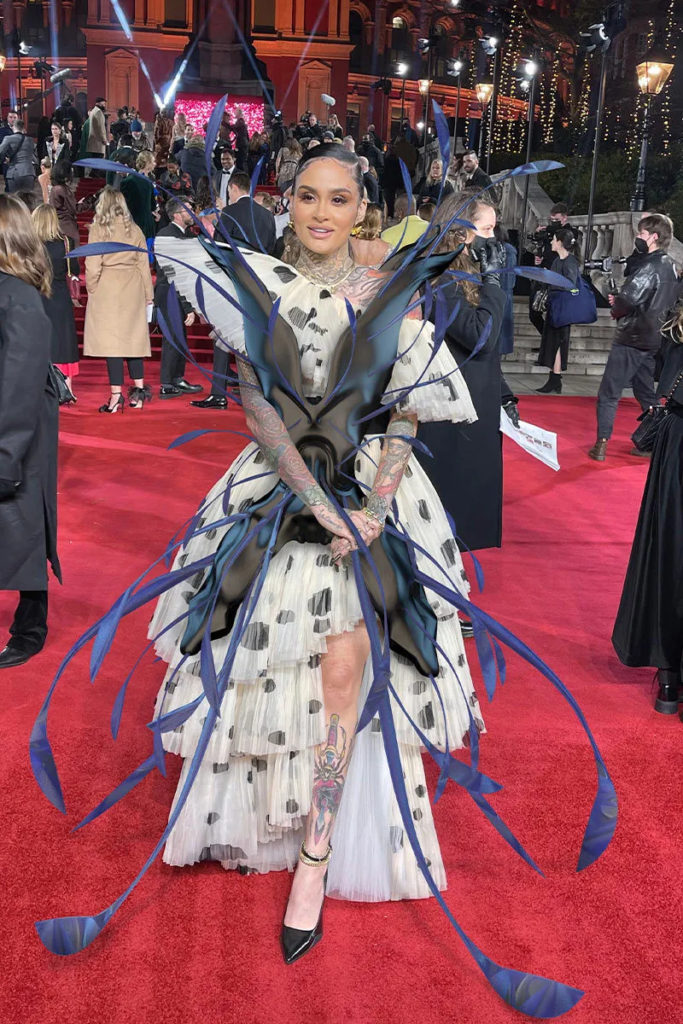Lately, an AI-generated art piece called Théâtre D’opéra Spatial has won the championship in the Colorado State Fair’s fine art competition and stirred up a huge controversy on the Internet. The award-winning art piece is generated by Mid journey, an AI engine that creates images via deep learning based on textual descriptions. While many people disagree with the eligibility of AI-generated artwork, AI technology is reshaping the creative industry differently.

AI Fonts Generator
Most time, font design can showcase the creativity of the user interface designers. Although it might be easy to design an original English font since there are only 26 alphabets, some languages, such as Chinese and Japanese, have up to 50000 characters and it is impossible for the designer to write all the characters in the designed font one by one. In this case, AI is here to help. A university in Tsukuba developed an AI font generator Aidealab to assist designers in the font design task. The designers only need to write down 5 characters in the new font, the AI will observe the shape, stroke, and features of the new font from the designers’ input, and then there will be 15000 characters generated with the technology of Generative Adversarial Network (GAN). The users may even save their designs in vector images so that they may easily apply the newly designed fonts on a different platform, which also benefits the layout designing process and marketing automation.

A university in Tsukuba developed an AI font generator Aidealab to assist designers in the font design task. The designers only need to write down 5 characters in the new font, the AI will observe the shape, stroke, and features of the new font from the designers’ input, and then there will be 15000 characters generated with the technology of Generative Adversarial Network (GAN). The users may even save their designs in vector images so that they may easily apply the newly designed fonts on a different platform, which also benefits the layout designing process and marketing automation.
Interactive Exhibition
AI also provides a more interactive art exhibition experience for the guests. One of the calligraphy exhibitions of Wang Xizhi in Taiwan adopted an AI installation allowing guests to handwrite words on the device. The AI will analyze the input and compare it with the handwriting style from the past, the transformation journey will then be shown on a giant screen to demonstrate the evolution of calligraphy.
The interactive experience is also available in the Hong Kong Museum of Art right now, you may visit there and have your very own experience.
Vogue Phygital Runway
Speaking of new experiences in the creative industry, fashion shows nowadays are starting to apply different technologies and make their shows more unique and innovative. When the pandemic started in 2020, Vogue launched its new designs in the form of NFT and sold a digital cardigan with 2 Ethereum, back then many fashion shows were canceled and that was the only way for vogue to stay connected with its supporters. However, this year, even though it is possible to hold a physical fashion show, Vogue decided to keep emerging the digital world into reality. In the Phygital Runway of Vogue, the model will walk on a physical runway, and with the Argumental Reality (AR) technology, a digital design is added to the model, giving the physical outfits some additional features. Without a doubt, the phygital runway is a special experience that suits the circumstance of the modern world, it also created more possibilities for the designers to showcase their creativity. Without the limitation of material and feasibility, the designer may design clothes that are irrealistic, unexpected, and exaggerated, and still, they are possible to be worn by the physical model on the runway.

AI Face Generator
Through deep learning algorithms, AI has learned how to generate human faces based on a large amount of data. By learning and memorizing pictures of different human beings, the AI marked down different characteristics of human faces and their facial expressions, and then it is able to generate a face that does not exist in the real world. There is a website called “This person does not exist”, the website will automatically generate a non-existent face upon every refresh and they all look like someone in the real life. Same as the font generator, the images are also generated by a Generative Adversarial Network (GAN), and the results are based on the observation of the AI from human faces of different races, characteristics, and the usual combination of facial features.

Since AI is capable of simulating realistic human faces, it is believed that the technology can be applied to investigation, if the victims can only provide verbal evidence of a person’s facial features, a more accurate picture of the wanted criminal can be generated, and thereby the chances of arresting them will be greater.
AI-Generated Influencer
Due to the face-generating ability of AI, pictures and videos on the media are sometimes unreal nowadays. Deep fake is one of the hot topics, there are some videos of celebrities or even politicians speaking in public that are actually made up with deep fake technology, and they surely stirred up discussion on the topic. Apart from just videos or images, the deepfake and AI face-generating technology are already applied to the influencer industry nowadays. A Tiktoker called Curt Skelton one day posted a video and revealed that he is actually a made-up influencer created by a woman using deep fake technology, if only there is an action model controlling the movement of the “influencer”, it can actually communicate with the viewer in real-time.
The deep fake technology is slowly shaping the entertainment industry. A Korean influencer “Rui” is another example of an unreal celebrity. A deep fake technology software Dob Studio combined the most popular facial features recognized by the AI into a face and generated “Rui” to be the imaginary YouTuber and interact with her fans. It seems that being perfect is not impossible anymore as long as the celebrity is generated by an AI based on the audience’s preference. Without a doubt, technology caused an impact on the media, entertainment, and even commercial marketing industry, not to mention it is harder to tell if a video is made up or not. Yet, it is one of the technologies that are worth paying attention to.
Technology is changing our lives, apart from the smart city or business aspects, the creative and entertainment industries are also reforming because of the appearance of new technologies and AI. If you would like to read more about our insights and case studies, feel free to visit our website for more.